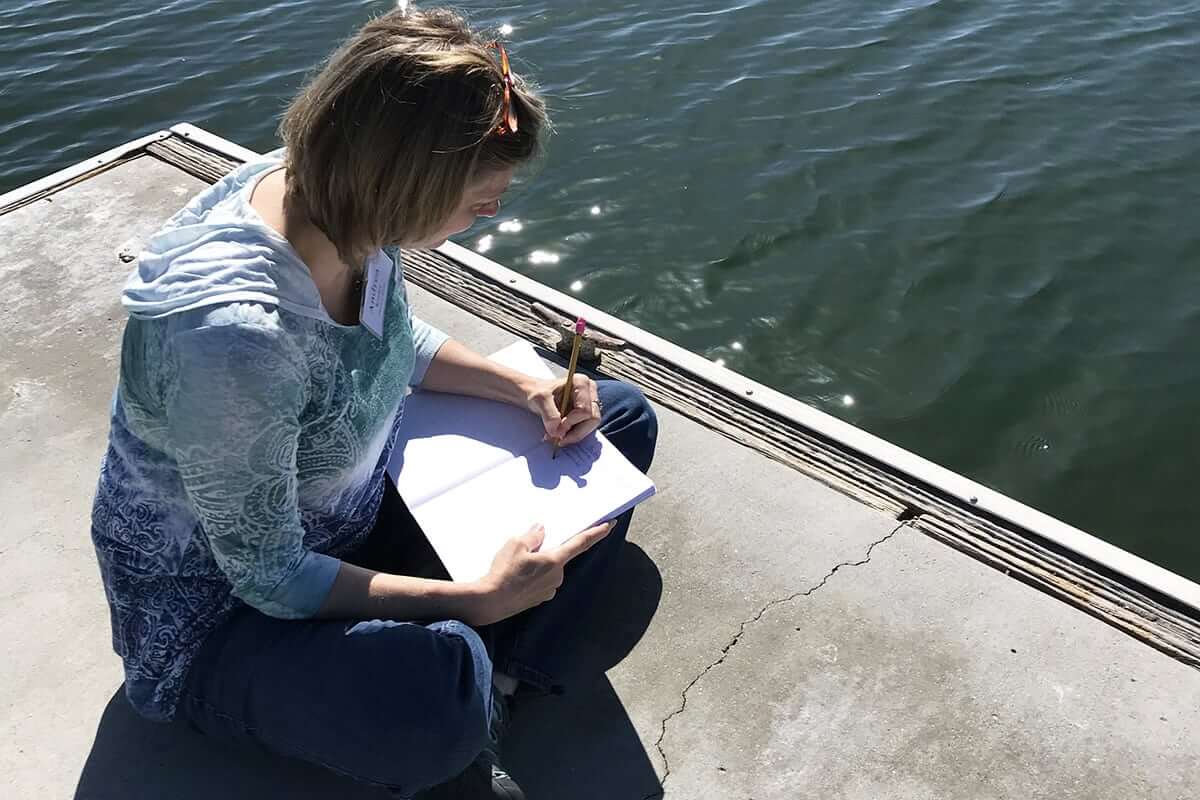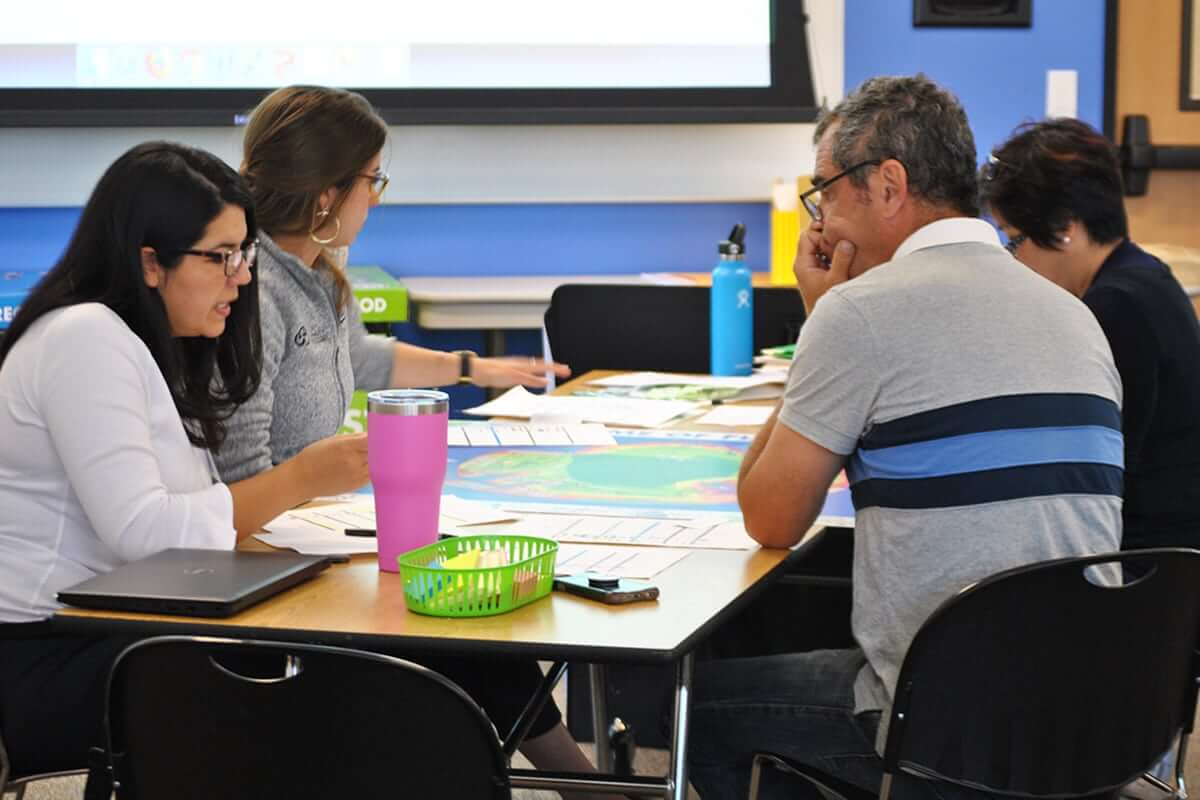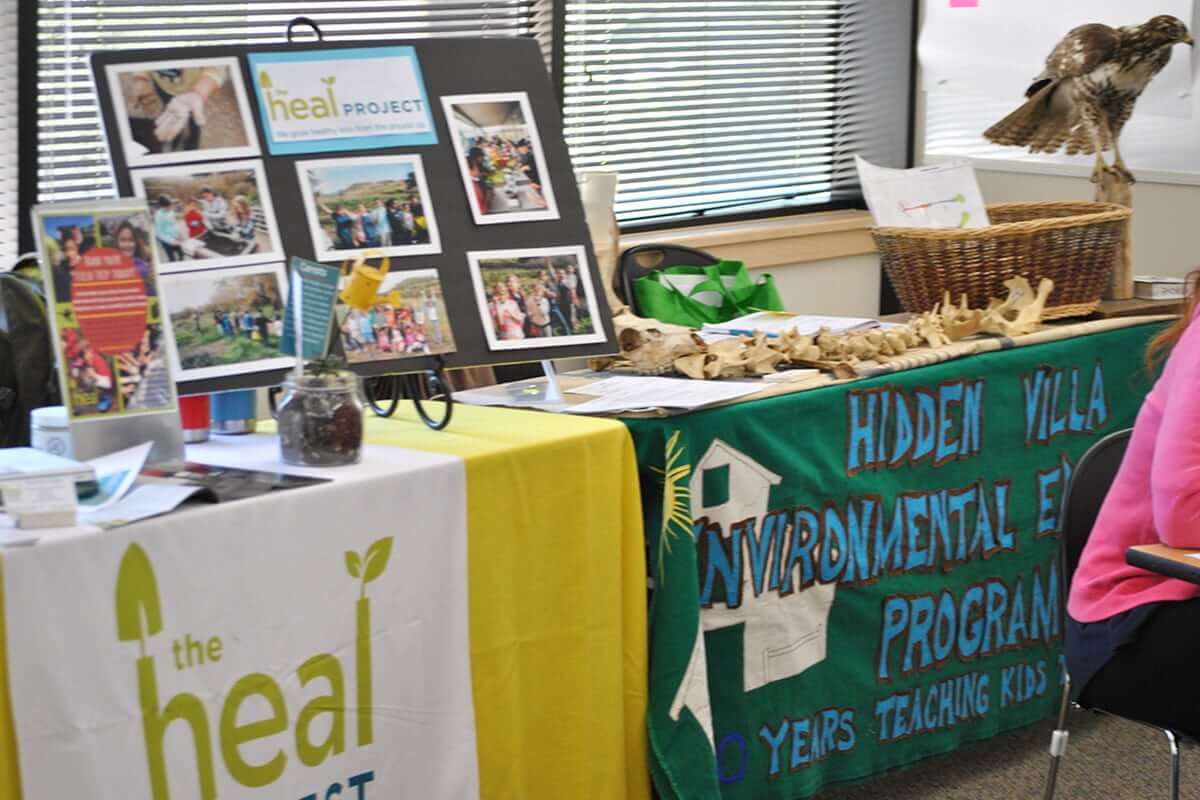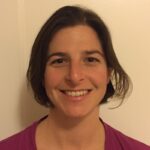I have always loved science and the outdoors. Prior to becoming a classroom teacher, I worked as an outdoor educator and had the pleasure of hiking through the redwoods with groups of fifth and sixth grade students. I majored in science as an undergraduate and consider myself to be a scientist. When I joined my current school in Daly City, CA, my partner teachers had a rich science curriculum that they were using for the whole second grade. They used Full Option Science System (FOSS) and engaged the students in exciting hands-on units such as exploring the life cycle of a mealworm or investigating magnetism. My teaching team is a passionate one, and dedicated to experiential learning, but we are also committed to standards-based education, and it didn’t take long for us to realize that the version of FOSS we were using was not aligned to the new Next Generation Science Standards (NGSS). We searched and found some online curriculum that was NGSS-aligned, and tried it out for a year, but did not find that it engaged the students in scientific inquiry or the experimental process—two essential components of science education. We felt stuck between our old curriculum and the new standards, and knew it was time for a change.
This is why I was so excited to hear about the San Mateo Environmental Learning Collaborative (SMELC) institute. I received an email from our principal about the institute, and immediately jumped on the opportunity. I was thrilled when I learned that one of my partner teachers, Andrea, would be able to join me at the institute. I was so excited to get a better understanding of the NGSS, incorporate environmental principles, and most importantly, have time to create and plan. As teachers, we often go to inspiring professional development but then struggle to follow through due to a lack of time or resources. SMELC was different. I knew we would be expected to create a unit at the end of the institute, and looked forward to attending professional development that came with such a high level of accountability and such a useful outcome.
The SMELC institute started off strong—we immediately dove into a sample NGSS- and environment-based unit. To be totally honest, I felt completely overwhelmed. The number of acronyms, standards, and resources that I was being asked to comprehend and integrate was tremendous. But the educators at the institute were very supportive and helped us see connections and sort out the mountains of information. I quickly began to make meaning of the acronyms and see connections between science and environmental standards. I began to see how relevant, meaningful, and urgent the curriculum was. I was eager to develop something that presented our students with equally important problems and opportunities for learning and thinking of change.
By day two we were already beginning to work on our very own unit. Andrea and I wanted to start with a local, natural phenomenon that our students could easily observe. At the same time, we wanted to end the unit with an environmental problem that would get our students thinking beyond the borders of our school. We were becoming more adept at navigating the variety of standards that we had learned, and wanted to develop a unit that was rooted in the standards and also locally-based. Furthermore, we wanted to make our unit as interdisciplinary as possible, finding ways to integrate reading, writing, math, and even some art! We certainly had our work cut out for us.
We got to work over the next few days, and with the support of the facilitators and partner organizations, managed to develop a unit that met many of our goals. Our unit is titled, “Healthy Habitats,” and begins with students observing various habitats at our school site. We ask questions such as: What is living and what is non-living? Why is the habitat on the field different from the habitat on the blacktop? How do humans influence habitats in positive and negative ways? How can we create healthier habitats at Skyline School? How can we create and maintain healthier habitats in other places outside of our school?
A major highlight of our unit is our partnership with Hidden Villa. Hidden Villa is an environmental education organization based in the Los Gatos hills. A representative from Hidden Villa was present at SMELC, and helped us imagine how a trip to Hidden Villa could support our students’ work in this unit. The educators from Hidden Villa will come to our school for a day, and then work with our students at their outdoor education site. They will help strengthen our students’ observation and questioning skills, and teach them about habitats that are different from the one at our school. A trip to a place like Hidden Villa will provide our students with the valuable experience of seeing a place so different from where they live, as well as appreciating a more natural, untouched habitat. It’s our hope that this field trip will reinforce our students’ appreciation of the natural world and their desire to protect and maintain healthy habitats at home and beyond.
As we embark into the new school year, I find myself already getting bogged down by the day to day logistics, mountains of papers, loose crayons, and boxes of band-aids that dominate a second grade classroom. Yet despite how hectic my days can be, I feel excited and ready to implement this very thorough unit that we created over the summer. Our field trip to Hidden Villa is booked, our science notebooks are being developed, and we have already ventured outside to the field for our first science lesson. My students’ (and my) excitement is palpable, and I am eager to see where this unit takes us!




